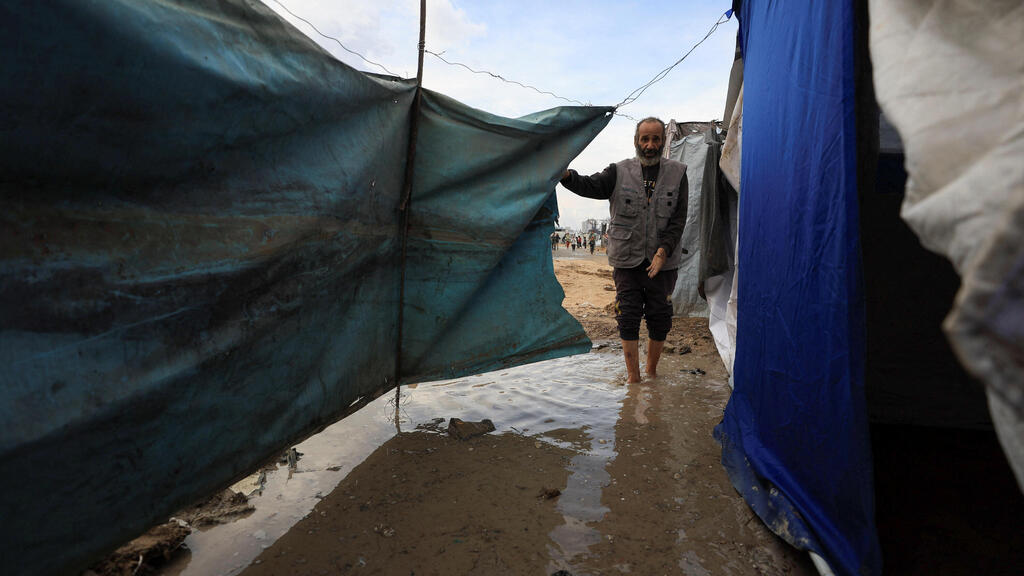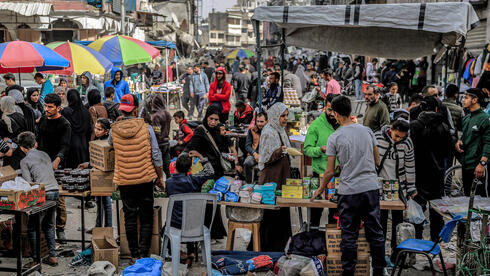With three Israeli hostages still held by terror groups in the Gaza Strip and talks continuing over the next stage of President Trump’s plan, Hamas is reestablishing control and consolidating its power. From the moment Israel withdrew from parts of the Strip under the agreement, the terror group began moving back in. It has been eliminating opponents, collecting fees on the sale of food and cigarettes, and raising questions about whether it will ever disarm or hand control to another authority.
Many Gazans who spoke with Reuters said Hamas has resumed control over numerous aspects of daily life. According to residents, Hamas monitors all goods entering Gaza and charges fees on items including fuel and cigarettes. Merchants say the group is also imposing fines. “Prices are high. There is no income. Life is hard, and winter is coming,” one resident said.
4 View gallery


“Hamas sees everything.” The terror group is collecting fees on goods
(Photo: AFP)
A senior food importer in Gaza said Hamas has not fully returned to its previous tax policy, but “they see and record everything.” He said the group tracks every shipment entering the Strip, with checkpoints along the routes, and even stops trucks to question drivers. Mustafa Ibrahim, an activist from Gaza City, added that Hamas is exploiting delays in Trump’s plan “to strengthen its rule.” He said he expects this to continue “until a replacement government is formed.”
4 View gallery


Tents in Gaza City during the rain today
(Photo:Dawoud Abu Alkas/ Reuters)
Ismail al-Thawabta, head of Hamas’s media office, denied that the group is charging residents fees on goods. He said Hamas is only carrying out “urgent humanitarian and administrative tasks, with broad efforts to control prices.” He added that Hamas is prepared to transfer authority to a new technocratic administration and said its goal is to prevent chaos in Gaza. “We want the transition to proceed smoothly,” he said. Ghaith al-Omari, a senior fellow at the Washington Institute, told Reuters that Hamas’s actions are intended to show both Gazans and foreign powers that it cannot be bypassed. “The longer the international community waits, the more Hamas entrenches itself,” he said. Even so, a US State Department spokesperson stressed that “Hamas cannot and will not govern Gaza.”
Meanwhile, the United States plans to bring a new resolution to the UN Security Council that would establish an international stabilization force for Gaza. The draft also highlights the possibility of “a credible path to self-determination and a Palestinian state.”
The draft, based on the 20-point plan presented by President Trump and his “statement of lasting peace and prosperity” signed with other leaders at the Sharm el-Sheikh summit, states that “the United States will initiate dialogue between Israel and the Palestinians to agree on a political horizon for prosperous coexistence.” Under the proposal, a Peace Council would serve as Gaza’s interim administration until the Palestinian Authority completes its reform program and is able to assume control “safely and effectively.”
4 View gallery


UN Security Council meeting
(Photo: Eduardo Munoz/ Reuters)
“Once the Palestinian Authority’s reform plan is faithfully implemented and Gaza’s development advances, the conditions may finally be in place for a credible path to self-determination and a Palestinian state,” the draft says.
The document also outlines the conditions for the withdrawal of Israeli forces from the parts of Gaza they still control. “When the stabilization force (ISF) achieves control and stability, the IDF will withdraw from the Gaza Strip according to the standards and disarmament timelines agreed between the ISF, the guarantor states and the United States.” According to the draft, the IDF would remain in a perimeter designated as a “security outer presence” until Gaza is sufficiently protected from any renewed terror threat.
The draft also defines the role of the stabilization force in Gaza. It would operate under unified command approved by the Peace Council, in coordination with Israel and Egypt, and funded by donor states and dedicated Peace Council financing tools. The force would be authorized to secure border areas, stabilize security in Gaza and oversee disarmament, including destroying and preventing the reconstruction of terror infrastructure. It would also be empowered to dismantle “nonstate armed groups.” The stabilization force would train and support Palestinian police units and would be responsible for civilian protection, including humanitarian operations.

